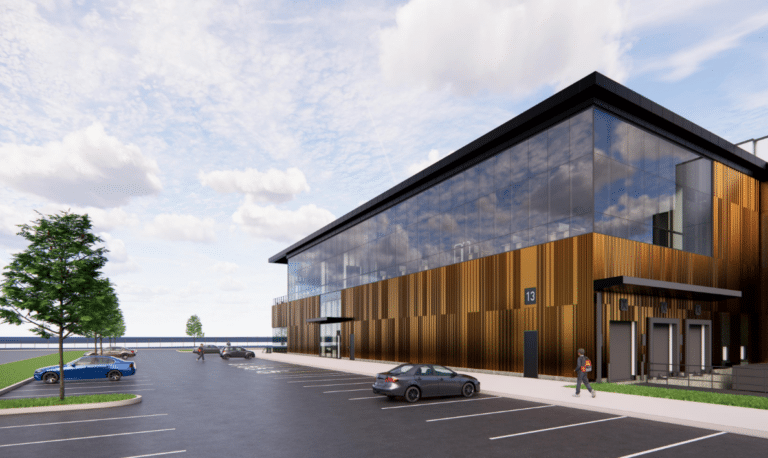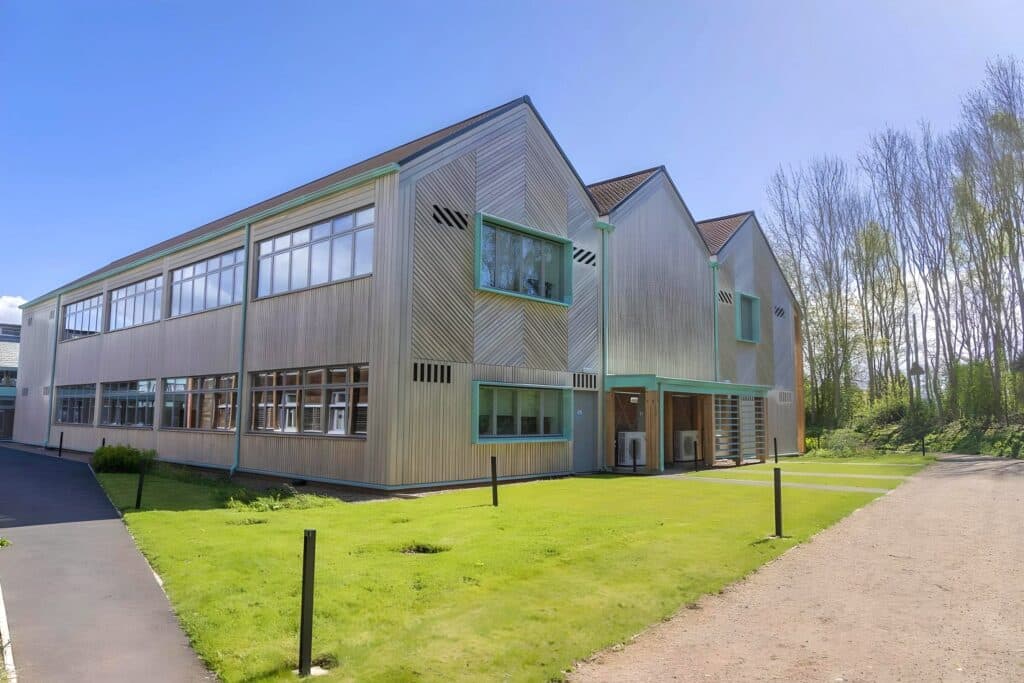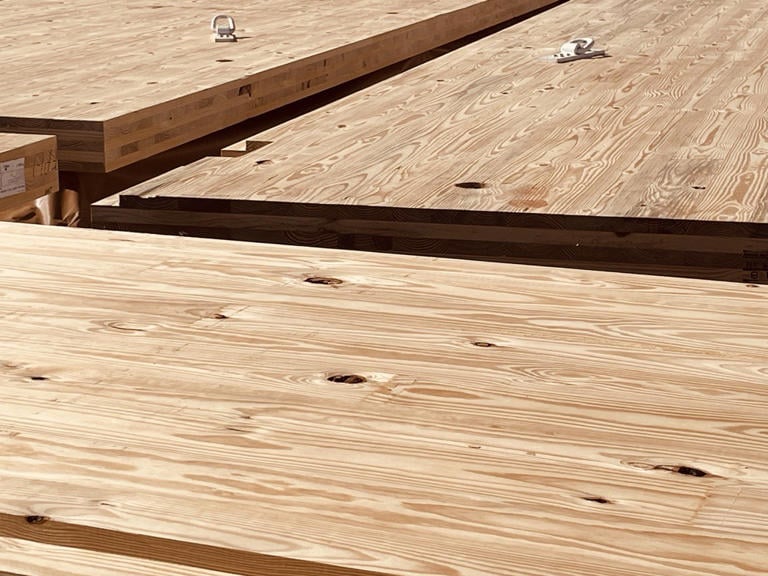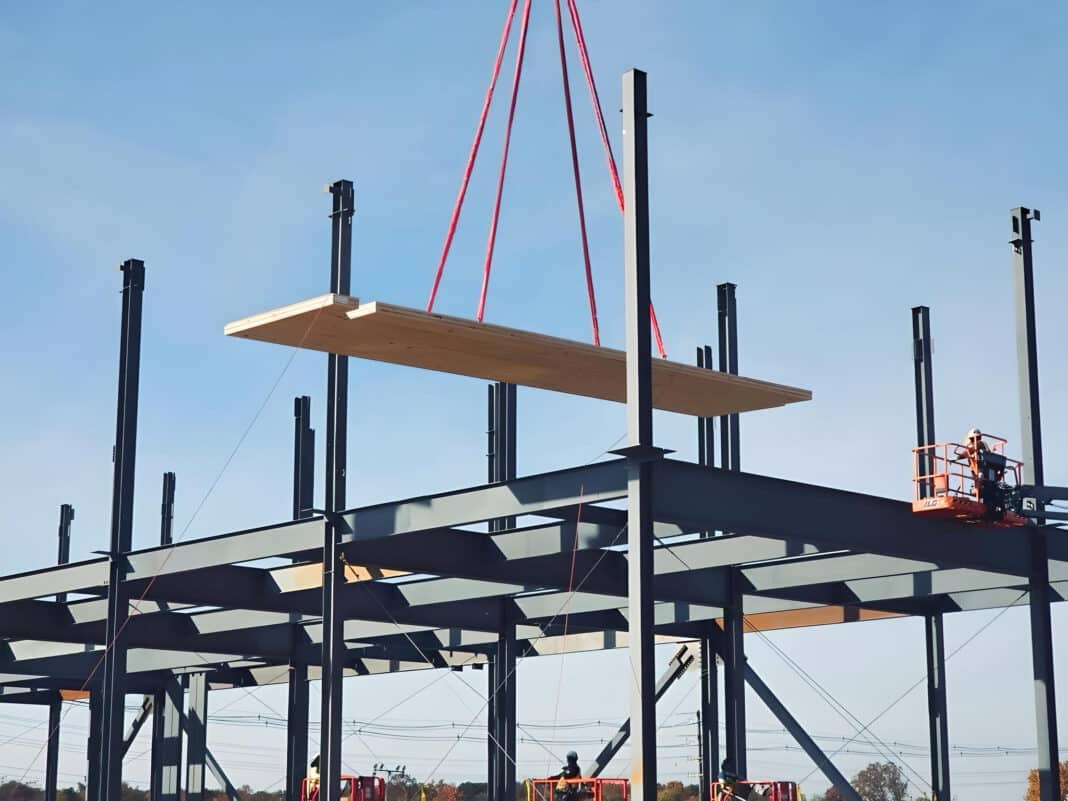Expect the next generation of data centres to be built out of cross-laminated timber, with Microsoft leading the way in constructing the world’s first two data centres out of wood. This massive undertaking has seen engineers “all hands on deck” building the new centres in a leafy suburb of Northern Virginia – with Microsoft now eying further sites across the United States and worldwide.
The new centres, designed by Gensler—responsible for hundreds of cross-laminated timber buildings worldwide—come after Wood Central revealed that developers are turning to mass timber to green up data centres — now more than 20 times larger than just a few years ago.
According to Jim Hanna, Sustainability lead for Microsoft’s Data Centre engineering team, the decision to use cross-laminated timber rather than steel-and-concrete is part of a company-wide push to become net-zero neutral by 2030, ahead of a 2050 goal of removing all emissions emitted since 1975.
While Microsoft has reduced emissions by 6.3% over the past three years, indirect emissions have skyrocketed by 30.9%—fuelled by the massive growth of data centres and subsequent hardware: “Indirect emissions are difficult to manage since they include carbon emitted during the extraction, processing, manufacturing and transportation, and so are outside Microsoft’s direct control,” according to a company statement.
And it’s not just mass timber—Microsoft is investing in low-carbon building materials, from carbon-cured concrete—which permanently traps CO2—to hydrogen-powered ‘green steel’, as part of its $1B Climate Innovation Fund.
“Microsoft is in a unique position just because they’re so large,” according to Thomas Hooker, an associate from Thornton Tomasetti, the structural engineer working with Gensler to deliver the data centres:
“They can almost be like a market mover and to some extent push some of these technologies to more widespread use just because it’s a high priority for Microsoft.”
Thomas Hooker, an associate from Thornton Tomasetti working on the data centres.

Floor to Ceiling: Microsoft’s new timber sandwich data centres
Starting with its Silicon Valley headquarters, constructed in 2021, Microsoft is part of a growing push by big tech companies to use cross-laminated timber, glulam, and laminated veneer lumber in major projects.
In April, Rare, Xbox’s largest game studio, moved into a new, fully exposed timber building—the first mass timber building constructed by Microsoft (Xbox’s parent company) outside North America. “A lot of our suppliers are on the same journey as we are…everyone is implementing key initiatives to lower the embodied carbon of their materials and products,” Mr Hanna said.

Wood Central understands that the new centres will use cross-laminated timber in the floors and ceilings, reinforced with a thin layer of concrete to ensure durability and waterproofing: “Even including that thin protective layer, the result will be a much lighter building requiring far less steel, another factor reducing the building’s embodied carbon,” Micorosft said.
Why data centres are a “sweet spot” for cross-laminated timber
According to David Swanson, a structural engineer working on the data centre designs, prefabricated offsite cross-laminated timber can be installed far more quickly and safely than corrugated steel. While the material can increase costs by 5-10% compared to traditional timber used in a single-family home, it can be hugely cost-effective for large projects given the reduced construction time, need for skilled labour, and economies of scale.

This cost-benefit analysis has become a big part of the data centre planning process: “We’re constantly trying to validate the suitability of these novel materials for use in a data centre environment,” Mr Swanson said. We want to make sure that they will perform, be safe, be resilient, and provide all the features that we’ve grown accustomed to all these hundreds of years that we’ve been using those other materials.”
Until low-carbon materials become widely available, planning for a net-zero carbon future is expected to remain complex, reflecting the many variables that can influence the mainstream adoption of emerging technologies:
“We have to be system thinkers across the entire value chain of these materials that go into our data centres and the equipment that supplies our data centres,” says Mr Hanna. “That’s what makes it hard, but certainly not impossible.”
- To learn more about the push to build the mega data centres of the future out of wood, click here for Wood Central’s special feature.






